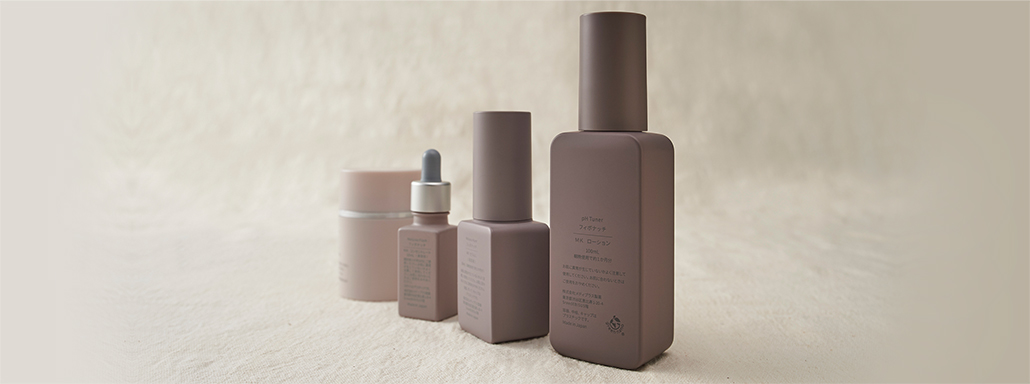Aiming for a sustainable world since the company’s foundation
Ozonized Glycerin(Glycenergy*¹) saves humans, animals, plants, and the earth’s environment
Mediplus Pharma, Inc. (former name: VMC) was established about 50 years ago when the founder, Mr. Hirokazu Shiota, learned about “ozone technology” in western countries.
In the 1960s, hypochlorous acid was used in a bleaching treatment in paper manufacturing worldwide. However, bleaching with hypochlorous acid caused the residual components to release dioxin into the environment, and its negative impact on the earth’s environment was noticed. Hirokazu learned about “ozone treatment technology” that bleaches without releasing dioxin on a business trip overseas and promptly brought this technology back to Japan, which started it all.
Subsequently, research & development and patent of the first generation ozone technology in Japan were achieved, and it continued to improve the natural environment through the paper industry on to other environmental projects (mainly water treatment in water supply and sewage, removing chemicals from the cleaning industry, and provision of ozone treatment devices for water during emergency).
In 1995, when the current CIO, Mr. Kotaro Shiota, joined the company, research & development of ozone treatment accelerated further.
In 2004, we created a patented ingredient, “ozone gel,” by applying our proprietary manufacturing method called Ozonation*² to glycerin, which was widely used in medicine. In 2022, after 18 months, we further stabilized the ozone gel and announced Ozonized Glycerin(Glycenergy) (patent application submitted) as a material that can be formulated in various cosmetics.
We use a natural material that cleared the RSPO standard, “glycerin” with “oxygen,” which is a gift from the earth as it does not stress the natural environment while developing our products.
We will continue sharing the beauty of Ozonized Glycerin(Glycenergy) as a material that can be cycled and returned to the natural environment and continue our research and development toward a sustainable society.
*¹ “Glycenergy™” is our nickname for glycerin and energy.
*² “Ozonation” is our proprietary manufacturing technology that ozonates oxygen by applying electrical energy. It is a technology that provides functions to materials without using any chemicals.
Sustainability of our products
1. Raw materials
Binsar Bakkara / AP Photo
Glycerin, the main component of Fibonacci, is derived from natural palm oil and used in Ozonized Glycerin(GlycenergyMK) .
It has been 20 years since the damage to tropical forests by palm oil farm development, which is needed to produce palm oil, was pointed out. However, in recent years, not only an impact on the environment but serious issues with human rights related to local residents and farm laborers of the producing countries became apparent. Meanwhile, palm oil demand always increased, leaving many environmental and social issues to resolve.

※license number:9-4090-21-100-00
By participating in the Roundtable on Sustainable Palm Oil (RSPO) that was established to face these problems, we are working to procure raw materials from sustainable palm oil.
Although the cost increases through fair-trade purchasing routes that are strictly managed, we can indeed contribute to solving these problems.
Instead of temporary attempts such as donations, we plan to grow and build on our social impact and significance.
2. Packaging
The primary waste treatment method in Japan is incineration, which is rare worldwide.
 We are not only in line with the global trend of reducing plastics, but we are also the first company in the industry to employ the technology called “green nanotechnology,” which reduces CO2emission when burning plastics for cosmetic use by 51%. We will apply this technology to toner containers and other related products.
We are not only in line with the global trend of reducing plastics, but we are also the first company in the industry to employ the technology called “green nanotechnology,” which reduces CO2emission when burning plastics for cosmetic use by 51%. We will apply this technology to toner containers and other related products.
3. Paperboard Box
We use papers certified by Forest Stewardship Council (FSC), an international NPO established to spread responsible forest management worldwide. Using materials that comply with the forest certification system stipulated by FSC, we take our first step toward supporting the actions of protecting and nurturing the world’s forests, aiming for environmental protection and sustainable forests.
4. Future outlook.
We selected those issues, which should be focused on and SDG targets we can contribute to realizing a sustainable society.
Starting with protecting human rights and reducing environmental stress in the procurement of raw materials, our company activities are closely involved with the objectives of SDGs. Utilizing the SDGs that came into force in 2016, we will routinely confirm that we can connect our sustainability action topics, 17 SDGs, and 169 targets to continue contributing.






